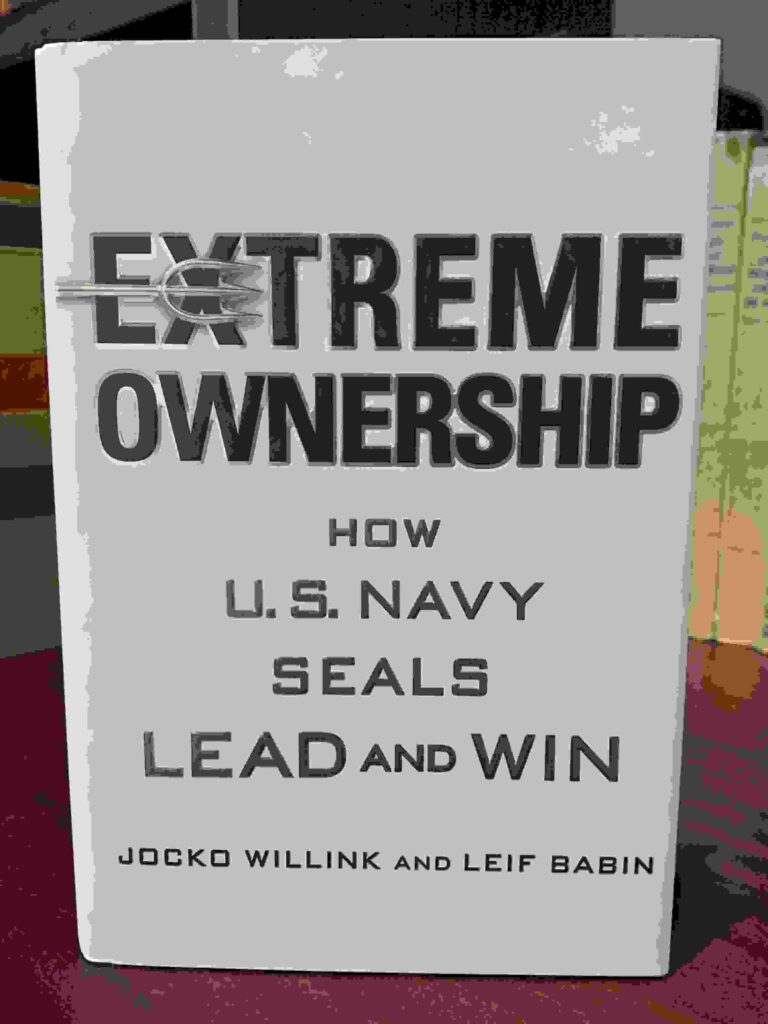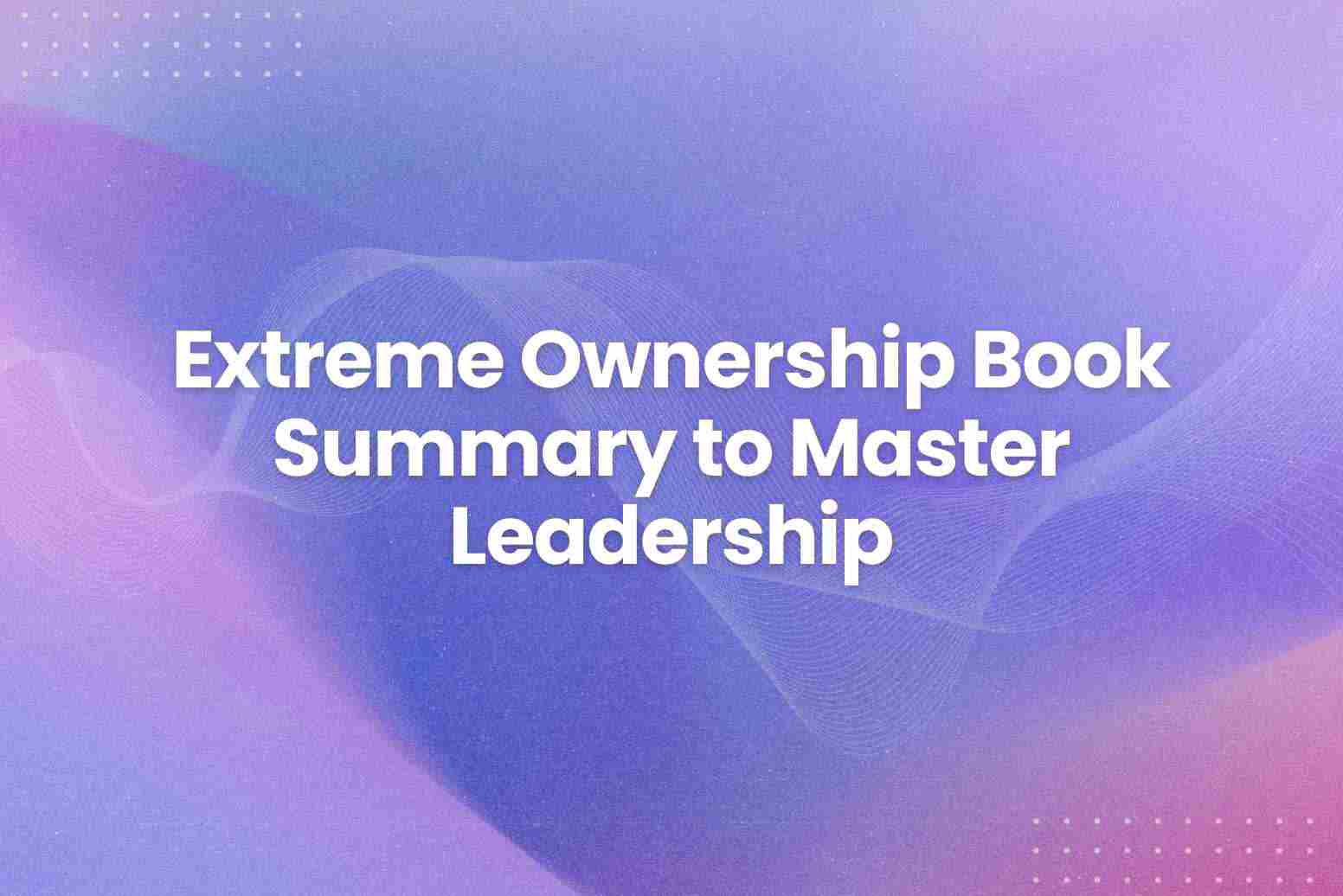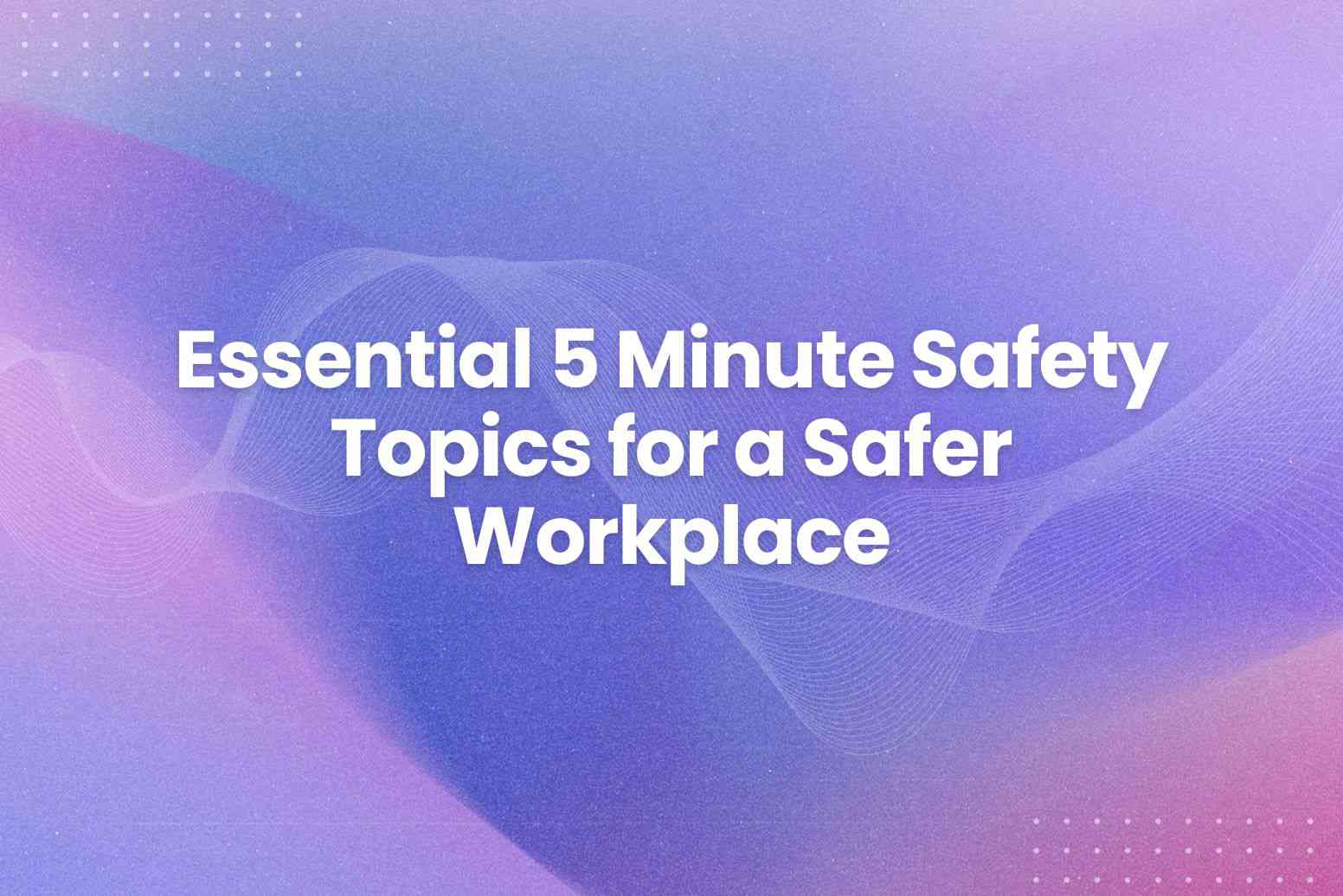Extreme Ownership by Jocko Willink and Leif Babin is a leadership guide that teaches readers how to take full responsibility for their actions and achieve success through discipline and teamwork. Through this Extreme Ownership book summary, we conclude how ownership can lead to success both in military operations and in everyday business scenarios. This is a useful guide that can be used in your work and life. If you want to gain actionable insights to foster personal and professional ability, don’t miss this Extreme Ownership book summary!

Extreme Ownership Book Summary at Glance
Two former Navy SEALs teamed up to bring us the most badass book on leadership ever written. In Extreme Ownership, Jocko Willink and Leif Babin take turns describing their experience fighting in the Battle of Ramadi, Iraq, and then conclude each chapter with a leadership principle and business application. Equal parts war memoir and leadership manual, these guys will get you to stop making excuses, take ownership of your life, and put you on the path to experience freedom through discipline.
The authors emphasize the principle of “extreme ownership,” meaning leaders must take full responsibility for their actions and the outcomes of their teams. “Extreme Ownership” offers a powerful framework for leadership that fosters accountability, strengthens teamwork, and delivers results. Through the lens of military experience, Willink and Babin inspire individuals to embrace responsibility for their roles as leaders, emphasizing that success is a collective effort grounded in shared ownership.
Are you finding it difficult to tackle a book that’s packed with information? Looking for ways to read through it faster? Give Arvin a shot! In just seconds, Arvin can produce a summary of any book you need.

Arvin can swiftly summarize key concepts from “Extreme Ownership” so you can grasp essential lessons without having to reread the entire book. Maximize your understanding and apply the principles in real-world scenarios by leveraging Arvin’s knowledge.
Practical Applications of Extreme Ownership with Arvin
Great Leadership is something that can’t be taught but can only be learned through practice. How well we use those tools depends on us. With Arvin, you can easily integrate the principles of Extreme Ownership into your life.
Chat with Arvin for Accountability Strategies
Engage in a discussion with Arvin about areas in your life where you can take greater ownership. Identify specific situations or challenges, and brainstorm actionable steps to address them. By cultivating a mindset of accountability, you empower yourself to become a more effective leader both at work and at home.
Team Dynamics Enhancement
Explore ways to strengthen team collaboration by discussing strategies with Arvin that promote collective ownership. Gain insights on how to foster a culture of trust and accountability among team members. Sometimes funny work jokes or unique team name ideas can help enhance performance and morale.
Communicate Ownership in Your Messaging
Before you send important communications, run your messages through Arvin to ensure they convey a strong sense of ownership and clarity. Use this AI-powered tool to polish your writing, making your leadership voice resonate in every interaction.
In this case, you may also like: 132 Sincere Employee Appreciation Day Messages. Sending the appreciation messages occasionally or birthday wishes for your coworker can significantly enhance workplace morale and foster a positive company culture, promoting team cohesion.
Generate Strategy Outlines
Need a plan to implement Extreme Ownership principles in your organization? Let Arvin help you develop detailed outlines for team meetings, training sessions, or workshops. Use these outlines to guide discussions and ensure everyone understands their roles and responsibilities.
Key Takeaways of Extreme Ownership
This part of Extreme Ownership book summary will focus on how this book can bring motivation and inspiration to everyone. So, let’s begin with the key principles and takeaways that this book focuses on.

1. The Basic Idea of Ownership Regardless of Circumstances
The leader bears full responsibility for explaining the strategic mission, developing the tactics, and securing the training and resources to enable the team to properly and successfully execute. They must own everything in their world. There is no one else to blame.
The key principle of Extreme Ownership is making leaders agree that they must own everything that they are in charge of. So that is going to include making decisions about both the successes and the failures.
Jocko Willink and Leif Babin underscore the power of this mindset shift: when leaders stop blaming external factors and start focusing inward on solutions, they usually unleash the possibilities of attaining such huge personal and organizational development as well. It’s an imperative reminder for leaders to be proactive, take the bull by the horns, and steer confidently and responsibly.
2. There is No Bad Team But Only Bad Leaders
A very controversial, but also unique idea of the book reveals that a leadership team is determined by its leadership quality. A leader’s success or failure depends on the success or failure of their team. It can’t be disconnected from their team. This principle will be challenging for leaders to examine the underlying performance of teams beyond their own leadership style, decisions, and behavior and how this is affecting outcomes.
Through the creation of an environment that is built around trust, respect, and high professional standards, leaders can change a group of poor performers into spectacular ones. It embodies how the qualities and leadership of an individual dictate the atmosphere and strengths of the team.
3. Belief in the Mission
In order to convince and inspire others to follow and accomplish a mission, a leader must be a true believer in the mission.
The engine of leadership runs on the fuel called belief, which is the source of its electricity. The first point made by Willink and Babin is that leaders of their caliber take it upon themselves to practice the mission and believe in the purpose behind their actions.
It is a rippling phenomenon: leaders who are genuinely dedicated and believe in their goals will, undoubtedly, start spreading this vibe to everyone who surrounds them. It is about doing the thing by linking all the dots and the overall goals and making the team members believe that they understand the ‘why’ after the ‘what’.
Such a connection is also equally a driving factor as well as an empowering one generally guiding the team to handle challenges with the spirit of overcoming.
4. Check Your Ego
Ego clouds our judgement and prevents us from the seeing the world as it is. Personal agenda’s become more important than the team’s mission, leading to poor performance and eventual failure.
- When you make a mistake, be humble and admit it.
- When the team faces a challenge, step up and help them develop a plan to overcome it. (Rather than blaming them)
- Never let personal success become more important than the team’s success.
- Never get complacent with past success. Always be focused on identifying your weaknesses and improving them.
5. Prioritize and Execute
Leaders need to determine the highest priority task and execute. When overwhelmed, determine the highest priority tasks and execute. Cut through the noise and focus on the vital few tasks that drive progress. Success relies on clear priorities and decisive action. This is where proactive planning plays a major role. You must have a clear idea of your objectives before you are “battle-ready”. Thinking ahead of time enables you to prepare for risks and handle them strategically.
When overwhelmed, take a step back to identify priorities. Do contingency planning. This helps map out likely challenges that could arise and plan a response to them. Help sub-ordinate leaders within teams to prioritize their efforts. This way, the leader doesn’t always need to be in firing line and focus on strategy.
6. Decentralize Command
Teams can work independently towards the organization’s bigger goal only when there is trust. The teams’ trust in leadership allows them to confidently make decisions of their own. The leadership’s trust in the teams allows the teams to grow
Leadership needs to give clear, concise boundaries for teams to work in. This allows the team to make decisions towards the goal of the organization. Teams need to be given the opportunity to solve problems of their own, which in turn allows them to gain more experience and trust. When teams make mistakes, they need to know that leadership has their back, especially when they have acted within the boundaries set forth.
7. Keep Things Simple
Extreme Ownership stresses the importance of clear, concise communication. Leaders are encouraged to avoid jargon and ambiguity, ensuring everyone understands their roles and objectives. This clarity simplifies processes and eliminates confusion, minimizing wasted time and effort.
What may seem simple to someone, may be very hard for others to understand. Seek another person’s perspective on a plan/idea/solution that one might have to really understand potential ‘hard-to-understands’
8. Cover and Move
‘Us’ vs ‘Them’ mindset between teams in the same organization should not exist. Support your teammates whether they succeed or fail. This leadership principle highlights the importance of teamwork, collaboration, and acknowledging every team member’s contributions to drive success.
Focus should be placed on the goal of the organization instead of the immediate goal present within the team. This way, teams will work to support one another to further progress the organization
9. Leading Up and Down the Chain of Command
Leaders need to know how to lead up (influence decisions above) and lead the teams they are in charge of. It can be tough to operate as a team when there are no buy-ins from higher levels to achieve certain tasks. It can also be equally challenging when the team is not motivated due to not knowing why certain tasks need to be accomplished.
Leaders need to learn to look at themselves when they are unable to get buy-ins from their leaders. Is it the way the idea was presented? Or is it the lack of details in the presentation? Leaders also need to truly understand why certain goals are being laid out so that they can relay it to their teams
Actions speak louder than words. Be the example of the values you want your team to uphold. Integrity, resilience, and accountability start at the top.
10. Dichotomy of Leadership
A good leader must be: confident but not cocky, courageous but not foolhardy, competitive but a gracious loser, attentive to details but not obsessed by them, a leader and follower, humble not passive, aggressive not overbearing, quiet not silent, calm but not robotic, logical but not devoid of emotion.
A person’s biggest strength can be his biggest weakness when they don’t know how to balance it. Thus, focus on becoming balanced leader, who can mould themselves depending on the need of the situation.
Conclusion
Extreme Ownership book summary helps you become a great leader. In it, Navy SEALs Willink and Babin cover key leadership concepts such as extreme ownership, overcoming ego, enforcing standards, simplifying, prioritizing, and executing.
Ultimately, Extreme Ownership serves as a timeless reminder that success is a collaborative endeavor based on accountability and continuous progress. With Arvin, you can further explore these principles by gaining insights on how to implement them in your own life and work environment.
FAQs
In chapter 1, the leader must own everything in his world and all responsibility for success and failure rests with him. There is no one else to blame. Total responsibility for failure is difficult to accept, and Extreme Ownership when things go wrong demands humility and courage.
“Extreme Ownership” is about letting go of the idea of centralized control, letting every person on the team make decisions at his responsibility level. This independence empowers the spirit of initiative and quick response to oneself challenges.
Extreme Ownership emphasizes individual responsibility and accountability too much, potentially ignoring systemic issues or external factors that may contribute to success or failure.
The estimated reading time for Extreme Ownership is 7-9 hours. The Arvin summary takes about 15 minutes to read.






